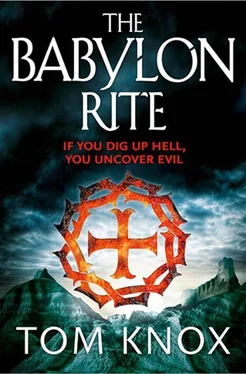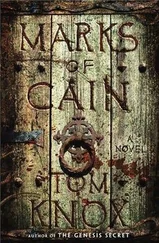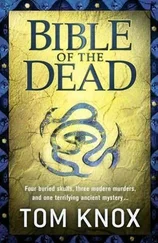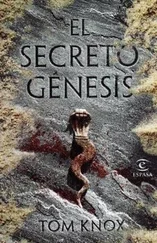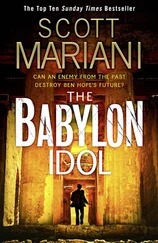Tom Knox - The Babylon rite
Здесь есть возможность читать онлайн «Tom Knox - The Babylon rite» — ознакомительный отрывок электронной книги совершенно бесплатно, а после прочтения отрывка купить полную версию. В некоторых случаях можно слушать аудио, скачать через торрент в формате fb2 и присутствует краткое содержание. Жанр: Прочие приключения, на английском языке. Описание произведения, (предисловие) а так же отзывы посетителей доступны на портале библиотеки ЛибКат.
- Название:The Babylon rite
- Автор:
- Жанр:
- Год:неизвестен
- ISBN:нет данных
- Рейтинг книги:3 / 5. Голосов: 1
-
Избранное:Добавить в избранное
- Отзывы:
-
Ваша оценка:
- 60
- 1
- 2
- 3
- 4
- 5
The Babylon rite: краткое содержание, описание и аннотация
Предлагаем к чтению аннотацию, описание, краткое содержание или предисловие (зависит от того, что написал сам автор книги «The Babylon rite»). Если вы не нашли необходимую информацию о книге — напишите в комментариях, мы постараемся отыскать её.
The Babylon rite — читать онлайн ознакомительный отрывок
Ниже представлен текст книги, разбитый по страницам. Система сохранения места последней прочитанной страницы, позволяет с удобством читать онлайн бесплатно книгу «The Babylon rite», без необходимости каждый раз заново искать на чём Вы остановились. Поставьте закладку, и сможете в любой момент перейти на страницу, на которой закончили чтение.
Интервал:
Закладка:
As they now knew, beyond doubt, this ceremony really happened. And this mural described it: precisely.
Jess scrutinized, and scribbled her notes. How was it enacted? First, it seemed, the Moche warriors performed some kind of ritualized combat. The main object of this brawl was to grab the opponent’s hair. When a man had his hair seized, he fell to the ground: submissive, and willingly doomed. All of these stylized combats took place within the community. DNA analysis showed this. The fights weren’t with enemies, but between friends and relatives, between brothers and uncles. The sole purpose of the fighting was to produce endless victims: for the sacrifice.
She snapped and clicked. And scribbled again in her notebook.
The ritual proceeded from here, with minor variations. The defeated warriors were stripped naked, and bound by ropes at the neck, like slaves being walked to the African coast. After that, as the next murals showed, the prisoners were taken inside the precincts of the temple. That could be here at El Brujo, or in Zana, or Sipan, or Panamarca, or the Temple of the Moon in Trujillo. At the peak of their empire the Moche had many great temples, stretching for hundreds of miles along the coast.
Jess scrawled, and then paused, thinking about Tomb 1 of Huaca D. She remembered the insect shells shining gaudily, like discarded fairground trash, in her flashlight, gathered grotesquely around a staked-out corpse.
What was the link between that discovery and El Brujo? Maybe there wasn’t one. And yet maybe there was.
They now knew the sacrifice ceremony had really happened. They also now had a sense the Moche really fed people to insects: hence their reverence of insects, depicted on the pottery as flies dancing around prisoners and skeletons. What, then, about the severed ankles and wrists of the skeletons they had also unearthed in Huaca D?
A few days ago Jess had sent another sample of these bones to Steve Venturi. Now she waited for his second verdict. If Venturi confirmed that her hunch was right on the amputations, then the clues began to form a narrative. But what narrative, precisely?
Jess pulled out her cellphone, and squinted at the little screen, in the dusty light, wondering idly when Steve would ring, or maybe Dan. But naturally there was no signal, not out here in the wilderness. She wouldn’t be disturbed by good or bad news, by any news at all, for the next few hours.
This was good, maybe. Fewer distractions meant she could concentrate on the task at hand: recording the murals.
Another scramble, up another flight of mud-brick steps, brought Jess to the Second Enclosure, where another large mural showed the concluding rites of the sacrifice ceremony.
Finding an angle to best catch the light, she took her photos of the row of prisoners, painted in vivid red. But the sea-wind was brisk up here on the higher levels and it kicked at her hair, which fluttered over the lens. Irritatedly she pushed her hair back, and considered what she was seeing.
The meaning of this penultimate mural was plain enough: the third stage of the ceremony, the procession to ritualized murder. But why did the prisoners have erections? The murals definitely showed them sexually aroused. Were they really aroused by the proximity of death? Turned on by their own approaching slaughter? It was yet another great puzzle of Moche culture: the sexualization of death; yet here it was, daubed in lurid red on the wall of a temple. Naked men waiting to die — with erections.
What was that noise?
That rattling?
She swivelled, alarmed — but it was just the homeless wind, catching at a flap of canvas. Flap, flap, flap. She was very definitely alone, with just the lamenting seagulls for company.
The final flight of cracked adobe steps brought her to the top of the pyramid, where the breeze was truly stiff, but the view spectacular, straight out to sea, beyond the other huacas. A faint thread of green, to the distant north, showed where the feeble Chicama River reached the Pacific.
She turned back to her work. And the Final Enclosure. Here the murals were most eroded, yet most unsettling. After being paraded and tortured — stabbed and whipped — the condemned men, still with their inexplicable sexual arousal, were brought into the highest and most sacred patio, quite open to the sky. And there, at last, the prisoners’ throats were cut with the great sacrificial tumi knife, in a complex and stylized interaction. The same figures were always involved in this mass murder: the Warrior Priest, the Bird Priest and the Priestess. It was presumed that these were Moche nobles and priests, wearing special clothes and jewels.
At the same time as the throats of the victims were cut, the ordinary citizens gathered to watch. And then the people held hands like children, and slowly danced around the dying men, playing ring-a-ring-a-rosy; they sang and chanted and danced as they watched the blood being drained from the men’s deftly-opened throats.
The blood was probably siphoned through little silver pipes — or toucan bones — and poured into the great chalice. This cup of sacred blood was then given to the Bird Priest, who drank the hot blood of the victims even as they died very slowly in front of him.
Jess shuddered. It was, frankly, appalling. And yet the sacrifice ceremony was not the end of the Moche terrors. Nor was it the worst.
Here was an image, often encountered in Moche sites, that no one had entirely deciphered. It was called the Decapitator, and it was thought to be one aspect of the high but unidentified Moche deity. Whoever this god was, here he seemed to be worshipped in the form of a massive tarantula, because tarantulas severed the heads of their victims. This great painted spider, with his lurid bulging eyes and his multiple octopoidal arms, nearly always held a severed head in his hands. And a tumi knife. But here he was lording it over a frieze that stretched right away around a central room, painted on the external wall at about waist height.
And the frieze showed women coupling with pumas, maybe even being raped by pumas. What the hell did that mean? It was truly, and richly, disturbing. It was almost too much. Jess felt a need to calm herself. This is just archaeology! There was no need to be spooked.
And yet she was a little spooked; it was so lonely out here. She really wanted a signal on her cell. The urge to talk to a friend, to talk to Dan, and hear his comforting reassuring scholarly voice, was strong. It didn’t even matter what they talked about, just a voice would be good, a voice plucked from the air — literally a voice in the wilderness.
She had so few friends in Peru. Apart from Dan, there was just Laura working down in Nazca, and Boris her old tutor in Iquitos. Both of them hundreds of miles away. Yes there were Larry and Jay at the dig, but they were more colleagues than chums, though she liked them a lot.
That left just Dan. And he was also her boss.
Part of Jessica liked the loneliness, the solitude. She’d always been a loner — ambitious, dedicated, trying to be the girl her father would have wanted. That was why her relationships had, hitherto, been so casual. Just sex and friendship, nothing serious. No attachments. Nothing to get in the way of the work.
But now her essential loneliness, her drive, was emphasized by her situation: she was literally alone, in a frightening desert, surrounded by Decapitator gods and murals of dying men.
She shivered. Remembering herself as that tiny girl in the hospital room, watching her father, slipping into his terminal unconsciousness, in the darkness of the night. She shivered, and closed her eyes. Her hand was definitely trembling as she took her last photos. Maybe her diabetes was getting worse. But she carried on anyway. Because she had just one more photo to take.
Читать дальшеИнтервал:
Закладка:
Похожие книги на «The Babylon rite»
Представляем Вашему вниманию похожие книги на «The Babylon rite» списком для выбора. Мы отобрали схожую по названию и смыслу литературу в надежде предоставить читателям больше вариантов отыскать новые, интересные, ещё непрочитанные произведения.
Обсуждение, отзывы о книге «The Babylon rite» и просто собственные мнения читателей. Оставьте ваши комментарии, напишите, что Вы думаете о произведении, его смысле или главных героях. Укажите что конкретно понравилось, а что нет, и почему Вы так считаете.
